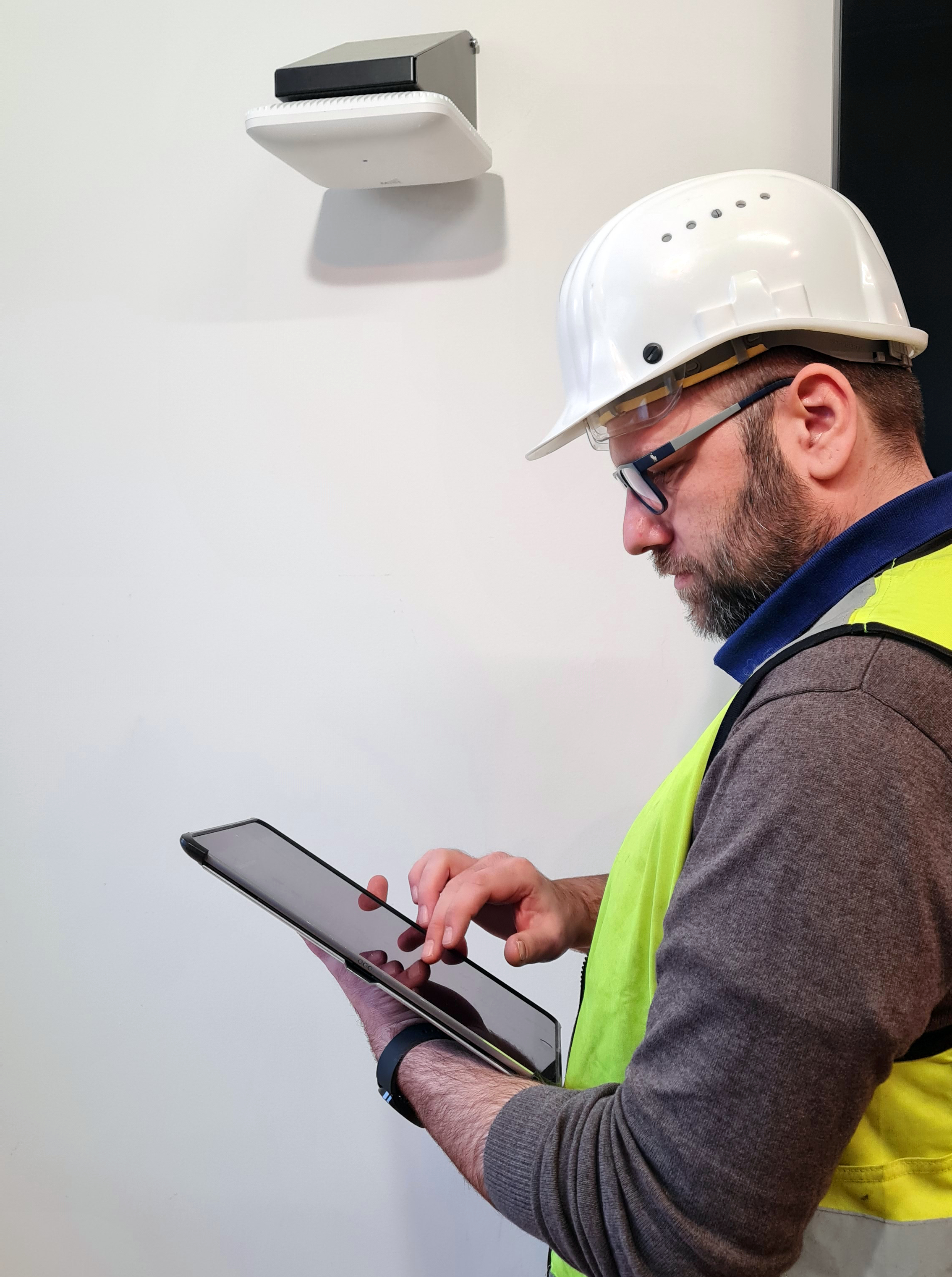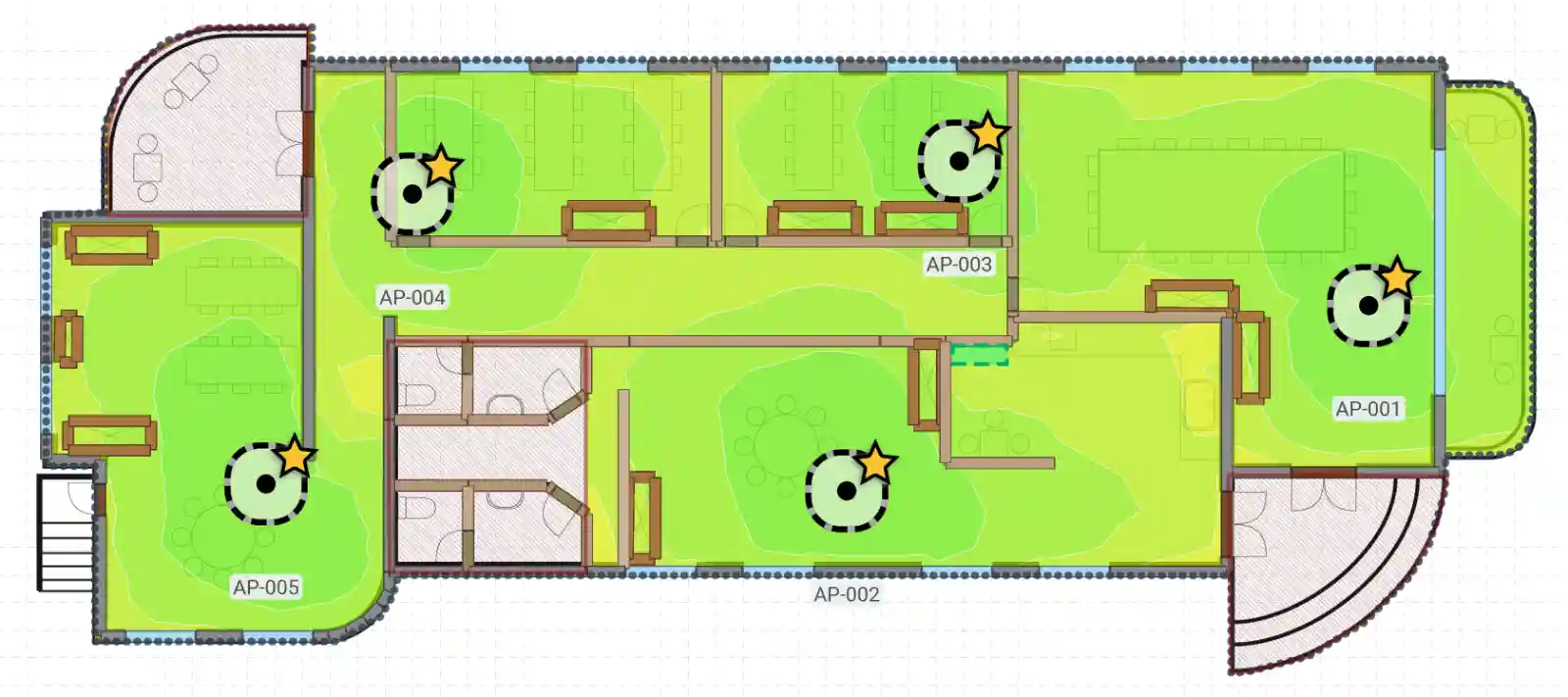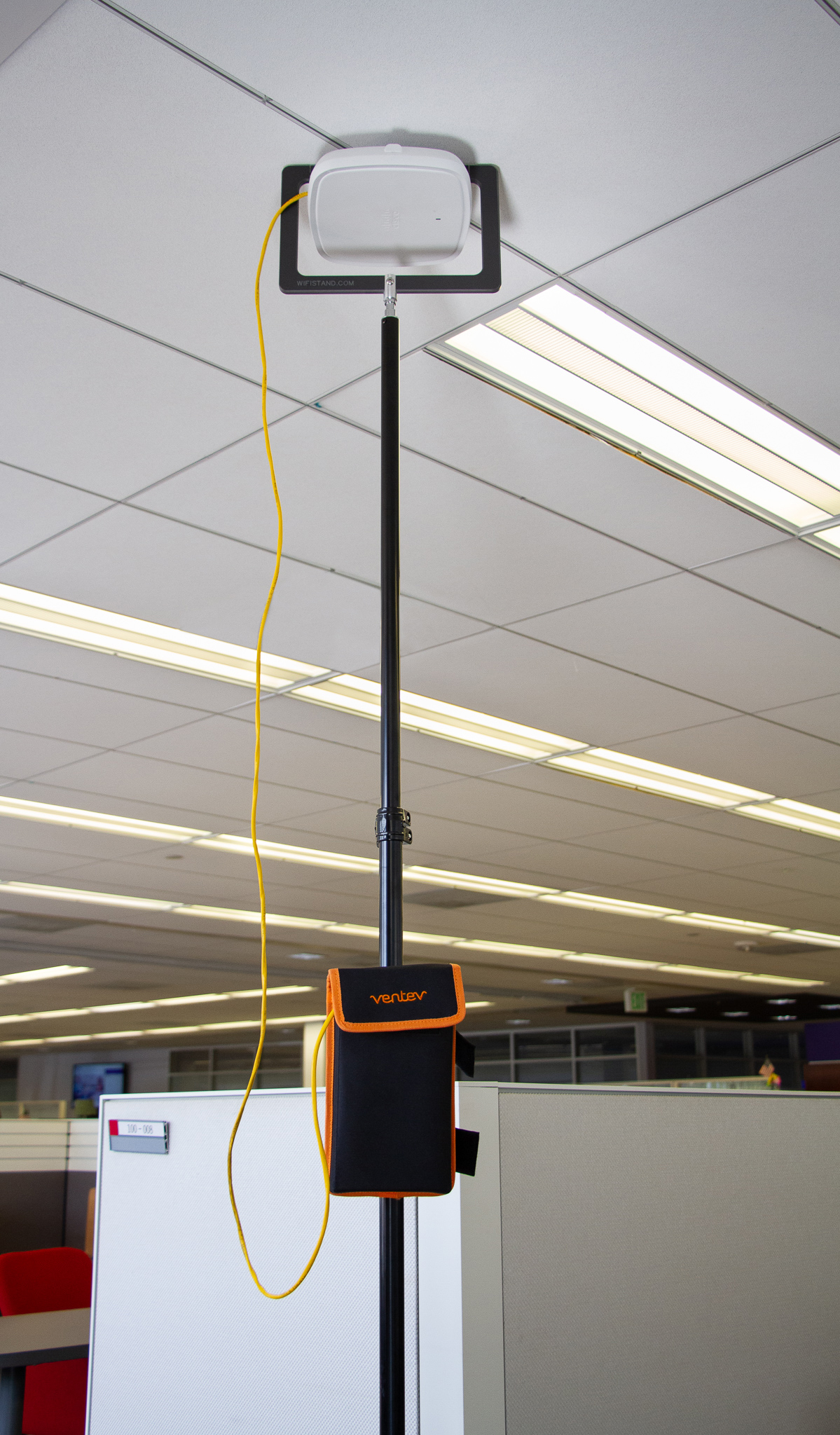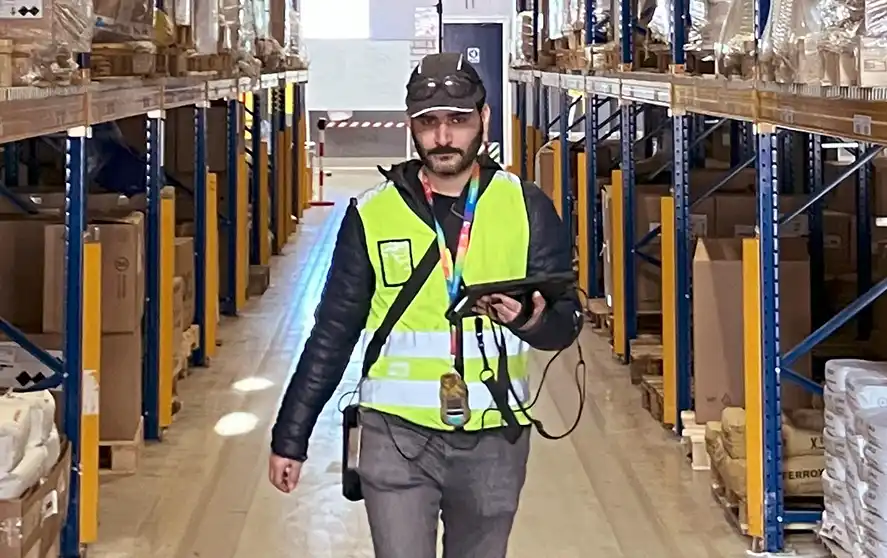Product information "WiFi Troubleshooting Survey (concrete troubleshooting of issues)"
A WiFi Troubleshooting Survey is a specific process for diagnosing and resolving issues in an existing wireless network. This type of survey is conducted to identify the causes of performance problems, coverage issues, or connectivity drops and to implement corresponding solutions. The goal is to optimize network performance and ensure a stable and reliable connection.
Main Aspects of a WiFi Troubleshooting Survey
Problem Identification:
- Gathering symptoms and complaints from users, such as slow connections, frequent disconnections, or dead zones.
- Documenting the specific locations and times when problems occur.
Network Analysis:
- Using analysis tools to check signal strength, interference, and network configuration.
- Reviewing the Access Points (APs) and their configurations, including channel assignment and transmission power.
Interference Analysis:
- Identifying external disturbances, such as other wireless networks, Bluetooth devices, microwaves, or other electronic devices.
- Measuring and analyzing interference that could affect network performance.
Throughput and Performance Tests:
- Conducting speed tests to evaluate the actual network performance.
- Checking network performance at different times of the day and under various load conditions.
Security Review:
- Reviewing the implementation of security protocols and their impact on network performance.
- Ensuring there are no security vulnerabilities that could affect network stability.
Steps in a WiFi Troubleshooting Survey
Preparation:
- Collecting information about the existing issues and the current network configuration.
- Selecting the necessary analysis tools and hardware.
On-Site Data Collection:
- Conducting a physical walkthrough of the site with special tools to measure signal strength and interference.
- Gathering data on network usage and performance at various locations and times.
Analysis and Diagnosis:
- Evaluating the collected data to identify weak spots and problematic areas in the network.
- Analyzing the causes of interference and performance degradation.
Solution Proposals and Implementation:
- Developing recommendations to address the identified issues, such as repositioning APs, changing channel assignments, or increasing transmission power.
- Implementing the proposed solutions and rechecking network performance.
Follow-Up and Monitoring:
- Monitoring the network after implementing solutions to ensure the issues have been resolved.
- Continuously adjusting and optimizing the network as needed.
Benefits of a WiFi Troubleshooting Survey
- Problem Resolution: Identifying and resolving specific network issues to improve user experience.
- Performance Optimization: Enhancing overall network performance and stability.
- User Satisfaction: Increasing user satisfaction through a reliable and stable connection.
- Efficiency Improvement: Preventing future issues through proactive monitoring and maintenance of the network.
A WiFi Troubleshooting Survey is especially important in environments with high network usage or critical applications, such as offices, hospitals, or educational institutions, where a stable and high-performance wireless connection is essential.





